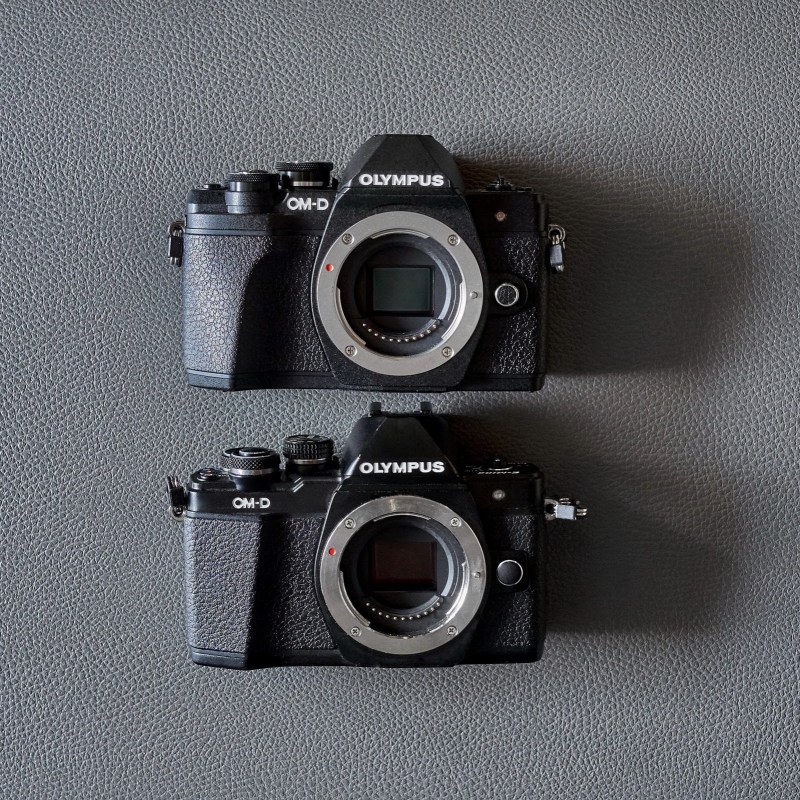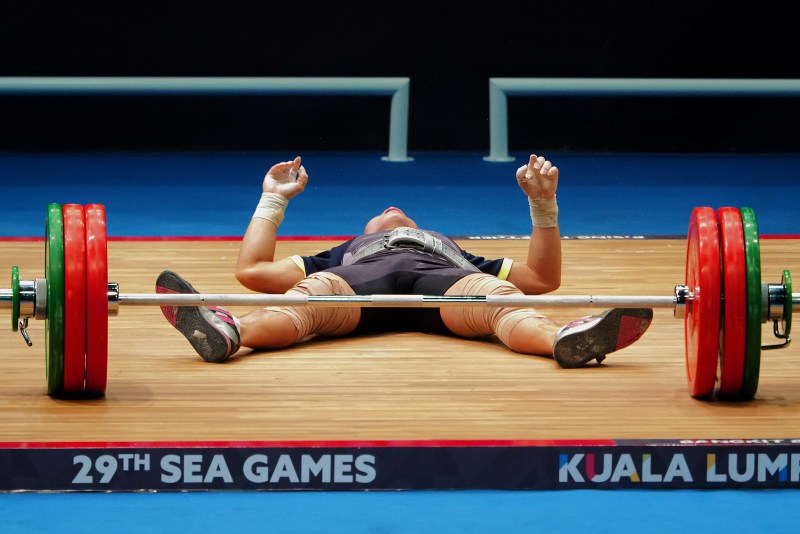Update (14 May 2018): Olympus has launched version 1.1 firmware update for E-M10 Mark III, enabling RC Mode (wireless flash TTL).
Olympus just launched a new camera in their OM-D series – the E-M10 Mark III. I personally own an E-M10 Mark II that was launched 2 years ago and have found it to be an extremely reliable and versatile camera to work with. The new and third iteration of the E-M10 comes with a few feature upgrades and improvements. In this article I shall review the OM-D E-M10 Mark III’s performance based on my own experience.
Some quick disclaimers before we dive in further. I am no longer an Olympus employee – this review was done independently. The OM-D E-M10 Mark III was on loan from Olympus Malaysia solely for review purposes. This is a user experience based review, so my findings and conclusions are subjective. All images were shot in RAW, and processed through an early version of Olympus Viewer 3 which fully supported the E-M10 Mark III. You may view the sample images with the full EXIF info in the Google Photos gallery here.
Comparing the E-M10 Mark II and E-M10 Mark III side by side, it is quite difficult to tell the difference between the two. The design, size and overall layout of the controls and buttons are almost identical. The biggest difference visually is the shape of the hand-grip, where the new E-M10 Mark III is slightly beefier and noticeably curved in shape.
 Top: E-M10 Mark III, Bottom: E-M10 Mark II
Top: E-M10 Mark III, Bottom: E-M10 Mark II
Here are some highlights of the E-M10 Mark III’s specifications:
- Same 16MP image sensor, but with updated processor Truepic 8, the same processor used in E-M1 Mark II
- 5-Axis Image Stabilization, with slight improvements
- UHD 4K video capture (3820 x 2160 resolution)
- 121 AF points from E-M1 Mark II, instead of 81 points from E-M10 Mark II
- New Cluster AF points selection, similar to E-M1 Mark II, but limited to only S-AF, and does not work in C-AF mode
- Autofocus is contrast detect only, hence no improvement in C-AF tracking mode
- Same built in EVF and Touch-AF LCD screen as the older E-M10 Mark II
- Slightly reworked and simplified menu and shortcuts
For full specifications of the E-M10 Mark III, you may visit the official product page here.
The first torture test I put the E-M10 Mark III through was the autofocus performance while shooting sports. Coincidentally, the 29th SEA (South East Asian) Games was taking place in my own backyard so I brought along the E-M10 Mark III with M.Zuiko 300mm F4 IS Pro to shoot tennis. I wanted to test how quickly and accurately the newly included Cluster AF points worked for fast moving subjects. I acknowledge that Cluster AF is not exactly a new thing in the camera world, and can be found in many DSLR or mirrorless ILC cameras. The question here was how effectively can the Cluster AF perform?
Video showing the Cluster AF in action while shooting a tennis game.
I activated the Cluster AF, which only works in Single-AF mode, and not with C-AF mode. Since I had to rely on S-AF, I needed to quickly refocus (half-pressing the shutter button) each time the subject moved or changed position. Following the subject with the 300mm lens was not an issue, thanks to the effective IS on the lens that stabilized my view through the EVF. The Cluster AF did a splendid job in rapidly locating the tennis player and achieving accurate focus with about 80% hit rate. I instantaneously pressed the shutter button after I heard the confirmation AF beep to make sure the focus was still on the subject as the shot was being captured. As the subject continued to moved, I followed the movement and repeated the process of half-pressing the shutter button to acquire focus before image capture.
I also shot tennis with the predecessor, E-M10 Mark II not too long ago, and I can confirm that I am more confident using the E-M10 Mark III’s autofocus. The main problem with the E-M10 Mark II was the use of single point AF, and this proved difficult when the tennis player was all over the place. If the focus point was placed exactly where the subject was, the AF worked perfectly. Unfortunately, the movement of tennis players is erratic and most of the time, off-center. The new Cluster AF helps in mitigating the need to worry about the position of the focusing point.

I don’t see much difference in terms of image quality output from the E-M10 Mark III in comparison to the E-M10 Mark II. The 16MP image sensor is seriously getting old, and I wish Olympus had decided to include the 20MP image sensor from the E-M1 Mark II. Why not? We deserve updated camera performance and not having to rely on the old sensor for so many generations of cameras (third generation now)!
If you are shooting JPEG, you will benefit from the new Truepic 8 image processor, which is in the E-M1 Mark II. The straight out of camera JPEG files are very good, with optimized details and sharpness, respectable high ISO noise control, excellent color reproduction and optimized lens flaw corrections (chromatic aberration, corner shading, barrel distortion, etc). Also the Truepic 8 sharpening is a tad less aggressive than the Truepic 7, rendering image files with less compression and sharpening artifacts.
However, if you are shooting RAW, you’re unlikely to find much, if any, improvement over what the E-M10 Mark II can achieve. Having said that, the new E-M10 Mark III does deliver pleasantly sharp images with (in my opinion) true to life colors. The skin tone is generally balanced and natural looking. Dynamic range may pose a problem while shooting in extremely harsh conditions, and it is best to avoid super high ISO. For shooting images with low ISO, under good light, I have my friend Carmen to thank for agreeing to model for me. Under natural, abundant light, using a sharp prime lens such as 45mm F1.8 or 75mm F1.8, the E-M10 Mark III can produce remarkable results.
The biggest complaint I have with the E-M10 Mark III, is the omission of the wireless flash RC mode. This was the first Micro Four Thirds camera from Olympus that does not have the wireless RC mode. I have come to rely on the wireless flash significantly for my insect macro work. If you want to have TTL wireless flash, you have to opt for third party radio triggers.
My workaround for not having wireless TTL capability was to use manual wireless flash. The Olympus external flash units can be set to slave mode and triggered by another flash. I used the pop up flash on the E-M10 Mark III, dialed down the power manually to the minimum, as my wireless trigger. I can then place the external flash wirelessly off camera, with the need to frequently adjust the power of the flash, which was cumbersome and annoying.
I don’t understand why Olympus would remove such a useful, powerful feature built into their cameras all these years. While not many people may use the wireless flash, it is still a great feature to have when you decide to get creative with multiple off camera flashes!
The handling of the E-M10 Mark III is very good. The newly improved design of the hand-grip on the camera allows for a more secure grip and is an improvement over the E-M10 Mark II.
On the other hand, I wasn’t happy to find out that Olympus has excluded any external grip for the E-M10 Mark III. Both E-M10 and E-M10 Mark II had an option to attach an external camera grip to better counter balance bigger and heavier lenses. The additional height and gripping area from the external camera grip also helped for steadier and more comfortable hand-holding, especially for shooting long hours. Not having the external grip was a step backward in my opinion, and I have never used my E-M10 Mark II without the grip attachment on it.
It was no surprise that shooting the tennis games at Sea Games with a 300mm F4 IS PRO was not easy, and more difficult than it should have been. Using other lenses such as 60mm F2.8 Macro, the assortment of prime lenses and 12-40mm F2.8 PRO was not an issue at all.
The single, most unique and effective feature on the Olympus OM-D camera has to be the 5-Axis Image Stabilization. Previously with the E-M10 Mark II, I have always felt that the 5-Axis IS was not as powerful as the one in E-M5 Mark II or E-M1. On the E-M10 Mark II, I was able to hand-hold a wide angle shot (14mm or wider) at maybe half a second, and never have I successfully capture anything blur-free at slower shutter speed. I can confidently hand-hold about 1-2 seconds with wide angle lens on the E-M5 Mark II and E-M1.
I was surprised to discover that I can now achieve similar image stabilization effectiveness on the E-M10 Mark III. I managed a 1 second hand-held exposure with a 25mm lens, and 2 seconds hand-held with the 7-14mm lens at the 14mm end. While a tripod is always the recommended solution for low shutter speeds, it’s nice to have the option in an emergency.
 1 second shutter speed, hand-held, 25mm F1.8 lens
1 second shutter speed, hand-held, 25mm F1.8 lens
 1/8th second shutter speed, hand-held, 7-14mm F2.8 lens, at 7mm
1/8th second shutter speed, hand-held, 7-14mm F2.8 lens, at 7mm
 2 seconds shutter speed, 7-14mm F2.8 lens, at 14mm
2 seconds shutter speed, 7-14mm F2.8 lens, at 14mm
Olympus has reworked their menu and shortcuts in the E-M10 Mark III. The format of the menu now resembles the E-M1 Mark II, but simpler. For example, instead of having 5 different settings for image stabilization (Off, S-IS-Auto, S-IS-1, S-IS-2, S-IS-3), now you can simply turn it On or Off. There is no longer Live View Boost 2, which enabled the camera to see in near complete darkness situation, and you can only turn Live View On or Off. The customizeable buttons on the camera also have been stripped down to bare minimum, the number of assignable functions have been reduced, with no options to use the function buttons for important settings such as metering modes and ISO/WB controls. The red video record button is now noncustomizeable.
The arrow pads on the camera now are assigned to shortcuts at all times, and cannot be customized otherwise. The ISO, flash and timer/burst modes are accessible via the arrow pad shortcuts. I am used to pressing any arrow pad to activate the focusing points; hence I encountered many unwanted changes in settings shooting with this camera. I am sure after using this for a while, muscle memory will kick in but I do treasure the flexibility of being able to assign the arrow pads to direct quick access to focusing points, like they used to.
There is now an “Advanced Photo” mode (AP) at the mode dial, once activated, will bring up all the advanced features of the camera, such as Live Composite, Live Time, Keystone Compensation, HDR mode, Bracketing, Multi-Exposure, Silent Mode, etc. The simplification of the menu and custom buttons can only mean one thing: Olympus is targeting the E-M10 Mark III at beginners to photography.
 The direct shortcuts to ISO, timer/burst settings and flash on the arrow pads.
The direct shortcuts to ISO, timer/burst settings and flash on the arrow pads.
One of the highlights of the E-M10 Mark III, is the ability to record video up to UHD 4K resolution. I am not a videographer, hence I shall not comment much on the video capabilities of the E-M10 Mark III. I have a short video clip compilation of the 4K samples taken with the E-M10 Mark III. From the sample tests, the 5-Axis image stabilization worked well with the UHD 4K video shooting, mitigating the need for additional video support systems, if the movement of the camera is minimal and controlled. The dynamic range of the scene was rather limited and I am sure not having an audio jack line in for an external microphone will be an issue for many. Olympus should not have skimmed through this feature. What is the point of having 4K video if you do not have the ability to record good quality audio?
Sample video clips taken with E-M10 Mark III with UHD 4K resolution.
Here are some high ISO sample images, all shot with 40-150mm f2.8 PRO lens, at ISO6400. The Truepic 8 engine did an excellent job in balancing the details and high ISO noise. While the grain is visible in the images, especially in the shadow regions, they were not intrusive, and the overall color and contrast of the images is well preserved.
My final thoughts on the E-M10 Mark III?
It is a reliable Micro Four Thirds camera that can deliver great results, but it does not particularly excel at anything. It is not the class leader when it comes to image quality, autofocus speed or any other specific imaging feature. Having said that, it is also a camera aimed at newcomers to photography, or pro photographers and hobbyists who want to carry a second camera system with minimal footprint. The camera won’t disappoint you, and can perform respectably well, even under the severe torture tests that I put it through.
The Cluster AF, though limited to S-AF operation only, worked well in nailing difficult fast moving shots. I was impressed by the improvement in the 5-Axis Image Stabilization system, providing more confidence in getting the shot at dangerously low shutter speeds. I am generally satisfied with the overall image quality, with pleasingly sharp and detailed images with true to life color rendering. Handling on the camera was improved and I was comfortable shooting with the E-M10 Mark III for long hours except for longer lenses of course (4 hours at a stretch, at the tennis games). Shooting with the E-M10 Mark III was very much like using the E-M10 Mark II, with better AF, improved Image Stabilization, 4K video and improved handling.
Olympus should update their image sensor to the new 20MP one, instead of using the 16MP image sensor from their older cameras. I do not see much or any improvement in terms of image quality over the E-M10 Mark II. I am disappointed with the omission of wireless TTL flash support in the camera (firmware version 1.1 has been released with patch enabling the wireless TTL flash), and no availability of external grip attachment. The reworked menu and shortcuts could have been better improved.
If you need high performance and the best image quality that Micro Four Thirds can offer, you may want to look at the E-M1 Mark II, or the Panasonic GH5. Excluding challenging and extremely demanding shooting circumstances, the E-M10 Mark III is a fun everyday camera that hobbyists and anyone can surely enjoy using, while getting great straight out of the camera results.
__________________
We are also on Facebook and there is a curated reader Flickr pool.
Images and content copyright Robin Wong 2017 onwards. All rights reserved























Hello, thank you for this review! I’m new to photography and am considering the em10 mark 2 or 3. Not sure which I should get, seeing that there are pros and cons to both. Do you have any suggestions? Also, may I know the quality of JPEG processing for mark 2 as compared to mark 3? Is mark 2 decent enough? Thank you!
What would sway me to get a mark 3 instead of a mark 2? Or vice versa? Thank you for you rtime
Does the e-m5 ii or e-m10 III have better s-af and c-af performance?
hi robin, is the wireless flash function using radio or optical?
I highly recommend idealshare videogo to Convert Olympus OM-D E-M1 Mark 4K Video to Final Cut Pro Apple ProRes.
Dear Robin thank you for the informative reviews. I am now contemplating between EM5 II and EM10 III , can you please help to suggest which is the best I shall get for myself. I need to get them tomorrow haha. I am getting 12-40mm f/2.8 Pro & 25mm 1.8 as well. I snap more photos on event – cat show to be specific and make videos too.. thanks Robin!
If you need weather-sealing, better electronic viewfinder, ability to attach an external grip, and a host of numerous customizable function buttons and shortcuts on the camera, the E-M5 Mark II is a better option. Otherwise, if you want to have the smallest form factor, simpler menu and setup, easier to use camera, but also has 4K video recording, the E-M10 Mark III is a good choice. It all comes down to what you need.
Robin, I enjoy your reviews because they are “real world” experience based. I just received my E-M10 mk3 as a replacement for my E-M5 mk1. Can you elaborate on what you mention as Cluster AF? I can’t find any reference to it anywhere.
Thank you
I believe you can find all the explanation you need in the video. Did the video demonstrating the cluster AF load? Or are you having issues viewing the youtube video? You can see it directly here https://youtu.be/5iH01VwXISk
Hi Robin, it was such a nice and compelling review of this camera and also awesome shots of the SEA Games too. I’ve been out of the photography scene for quite awhile (my last camera was the Canon 40D !) and would like your kind input as to which camera should I get as to kickstart my hobby again. I can’t bear to carry around so much weight and bulk around even with an APS-C sized camera so i’ve decided to look into getting my first Micro Four Thirds. Im deciding between the E-M5 mark ii or the latest E-M10 mark iii, does the reduced menu options and customs and also the difference in the Image Stabilisation would really affect a user like myself ? I plan to use it with an Olympus 12-40mm f/2.8 PRO lens. Thanking in advance !
How about the fact e-m10 iii doesn’t have mysets anymore. this is a very big deal that robin didn’t mention about.
You must understand that I cannot possibly cover EVERYTHING. Else this review will be 5 times longer than what it is. It is intended to be a “user-experienced” based review. Yes, I missed that “mysets” out. I did however say that customization options have been stripped down to bare minimum.
Hi Robin,
Great Test!
You have the m1 Mark 1 Right? Would Love to Hear how it Compares in Terms of Focus Speed and viewfinder! Is a Used m1 still better for Photographing?
Thanks!
Martin
Hi Robin!
I had an em10mki and upgraded to the em10mkiii before there were any reviews out…yes I know I should have waited… I’m really sad about the change that Olympus has made. When they said they were redesigning the menu to make it more accessible and intuitive, I never tought about crippling the canera that much (that is not improving a menu system, that is just leaving things out).
I really don’t know if I should sell it and get the older mkii version 😥.
I hope that at least they didn’t cripple the image quality from the previous models…so far I haven’t noticed it but haven’t compared much with my okder photos either. For the rc flash, I don’t mind as I use third party triggers and flashes.
Better get mark 2. The IBIS is improved compared to mark 1.
Hi, I would like to confirm that the stabilisation has improved to the point that handheld shots are possible down to 1-2 seconds? If it is so, it would be a huge improvement. I am not able to find any other review that has taken note of this improvement – in fact, most say that it’s the same stabilisation found in the older model. Thanks.
Perhaps, I am the only one who appreciates that Olympus reduces the customize features/options on the OMD EM10 Mark iii. I like that each buttons has its own label and thus there is only one function for it. So, I do not need to remember what did I change last time. If I hit the flash button, I expect the flash menu will show up not the metering menu and so on. It makes life easier.
Since, I have the camera for about a week. I like every aspects of it, except the colors in Auto and Scene modes. The colours are too punchy, almost unreal. If Olympus allows the natural color profile to be used in Auto and Scene modes, it will be a perfect camera in my opinion.
Does AF improve for 14-54mm ii lens? Or the performance will be the same whether it’s EM5 or Em5.2 or Em10.3?
Hi Robin,
I have been using the Nikon D810 and 85mm F/1.8 G lens for months now and I’ve been more than happy with the results. The other camera I have is the Ricoh GR, which I use for wide angles. Earlier today, I visited my local camera store and played with a Panasonic GX85 and was paired with the Panasonic Leica DG Nocticron 42.5mm f/1.2. I was blown with the results and I almost traded my Nikon stuff. What made me stop from trading was the AF concern of the M43 – will it have a difficult time locking-on poor lighting conditions with moving objects? Will I get good enough image quality at higher ISO? Or should I just sell the GR and get the GX85 or any Olympus equal body?
Thanks.
If you shoot a lot in low light and needing to use ISO3200 and beyond, I suggest you stay with the Nikon. If you do not shoot a lot in difficult light and can do away with ISO1600 on F1.8 most of the time then the Micro Four Thirds should work just fine. I have no issue focusing in low light, you just need to selectively find areas with contrast and the camera will work.
Thank you, Robin!
Hi Robin, am a fan you’re the reason why I bought OMD-EM10 years ago and I watch your blog. Please advise me of my next camera update whatever brand
Robin , I am in a blur …. about AF with the 300mm f4 . I have the E-M5-I and the E-M10-I , and I bought a second hand E-M1-1 just before the new E-M1-II because I needed the optimised stabelisation for the 300mm F4 (in Africa) . Now I want to go do wildlife shooting in higher altitudes and I need to take the 300mm f4 with me , so a “light” upgrade would be nice . So I am opting (budget) to between the E-M5-II or E-M10-III . Any suggestions on stabelisation ..which one would I would be better off ? Is the Stabelisation+AF of the E-M10III better that the E-M5-II. Kind regards for all the reviews and pics… !
E-M5 Mark II allows you to use the 5-Axis Sync IS, meaning the camera 5-Axis IS will work hand in hand with the lens IS to further stabilize the image. This gives you much steadier hand-held shooting capability. Go for the E-M5 Mark II if you can.
I browsed on the dpreview site, and saw the Sample Gallery there concerning Olympus OM-D E-M10 II and E-M10 III. As for the image quality E-M10 II is better than the other one, in my opinion. I think, the JPEG output is much better because of the very finest details. In case of the new camera (M10 III) the images are soft. It was the most striking when I was looking at portraits.
I have come to not trust the image gallery from DPReview. I have concluded that the image quality is about the same if you shoot RAW, and the E-M10 Mark III is better if you use straight out of camera JPEG.
Given how cheap refurbished EM10 MKIIs are from Olympus, one wonders why anyone would buy a new one of these. I’m looking for a compact camera to do stills AND video. Perhaps this pushes me over the edge to the GX80/85 . . .
Hi Robin, I am new to the mirrorless camera. May I know that which of these camera is more suitable for a beginner, EPL-8, EM10 mark ii and EM10 mark iii, are the image quality between them significant?
If you are completely new, then the E-M10 Mark III is a good option, you have the latest JPEG engine. However, if you want more advanced features like the wireless TTL flash, option to attach external grip, then E-M10 Mark II is a better choice. I would not recommend a PEN unless you are just a casual shooter.
Hi, Robin. Greetings from Barcelona. Congratulations on your analysis. I also have to congratulate you for the quality of the photographs, especially for the portraits made to your friend Carmen. They are really beautiful. I have sometimes read that micro four-thirds system has difficulty getting a good bokeh or that it has a greater depth of field than bigger sensors. However, the bokeh of those portraits is magnificent. I suppose the quality of the lenses used has something to do with it. I was wondering if you could publish the EXIF data of those photos (shutter speed, F-number and ISO). Although I will understand if you prefer not to reveal them, since you may consider them as a professional secret.
With regard to the controversy raised here by the issue of the reduction of features of the EM-10 Mark III, I’d like to say that sometimes, different products of the same company compete with each other. This phenomenon is known in marketing with the name of “cannibalization” (I imagine it is because one product “eats” the other’s sales). This is often the case when a product of a lower range subtracts sales to a product of a higher range. To avoid this, companies tend to reorient products, reduce features, or sometimes make the drastic decision to cut their output. Anyway, it was just a curiosity 🙂
Hi Raül, as I have mentioned, if you want Exif data you may view all the photos in the online gallery here: https://goo.gl/KppfUS
Surely, you are right about preventing cannibalization of their own products, but redefining the product features. Olympus OM-D series are all close in terms of performance and specifications, so more differentiation was introduced to increase the gap between models.
Thanks for the info, Robin. One last query: if it is not possible to choose the focusing points using the arrows pads, how can you access them? Can they be activated via the touch screen or is there another alternative route? Thanks again!
You can still activate the focusing points selection by pressing the Left arrow key first, then you can move around to choose your focusing point using any arrow key. There is now no direct shortcut to use any arrow key immediately to change the focusing point, without pressing the left one first.
It is far better to cannibalize but keep the customer than to lose the customer to the competition. Many companies keep forgetting this and then make stupid decisions that hurt them in the long run.
Hello Robin, thanks for your review, it’s always a pleasure to read your opinions and see your pictures!
For me the 10III is absolutely aimed at beginners, the missing features from the older 10II is a dump down. So I can not recommend the 10III as a spare or second body to the users of a E-M1/5, like myself. Every part you mentioned on the negative side has a checkmark on the 5II. If you want these feature, you have to go one step up and you get it, of course for a higher price.
As a result for me this camera is more a new Pen with integrated viewfinder instead of a new OMD. We will see, how this camera will perform in different countries/regions. For germany this was in my opinion the wrong decision. The 10 is not cheap if you compare the entry level cameras and now you also have reduced functions.
Thanks for the kind words. The E-M10 Mark III is not more geared toward entry level user, that part is quite clear with the numerous Auto modes and also the removal of some features from previous E-M10 Mark II. Regardless, as you mentioned it is still a good entry level camera, though the price may indicate a lot of competition from other manufacturers.
Hi Robin, thanks for the review. I am new comer to MFT and in fact new to the photography equipment except smart phone. I would like to have your suggestion which one to choose, new em-10 mk iii or old mk ii. If I choose me ii, is there any draw back in image quality, I am not too serious about 4K video. Appreciate your kind suggestion. Thanks.
If you are completely new, I do suggest getting the new E-M10 Mark III, mainly benefiting from the latest generation image processor (Truepic 8, same one in their flagship E-M1 Mark II), better AF overall and improved handling. Having the Truepic 8 provides you with improved JPEG output (good colors, sharpness/details, contrast and high ISO noise control) when you are not ready to shoot RAW and deal with post processing just yet.
Thanks again for your kind advice. But I did get last minut offer at one of the IT show here in SG last Sunday. Normal price for em-10 mk ii with kit lens was s$998. I got offer at s$938 for it and one additional lens m.zuiko 30mm f3.5 macro for free. Considering the budget, I decided to go with em-10 mk ii. Hopefully I don’t get regret over that decision. After reading your review and seeing sample photos of em-10 mk ii on your blog, I really impressed it and that was one of the factor I decided to go with it. Thank you.
Olympus isn’t the first camera company to remove features as they iterate a given camera line. Both Canon and Nikon have removed features and capabilities in the various lines (such as Canon from the 50D to 60D, when the 7D was first introduced in 2010, or the current Nikon shift from the D7200 to the D7500). So I’m not surprised. And I have a theory as to why: The E-M10.3, along with the E-PL8, are aimed squarely at the social media crowd, especially the vbloggers. The E-PL8 and E-M10.3 are marketing cameras. This is the kind of differentiation that all the existing camera makers are going to have to explore going forward. And just to show how important and competitive this segment is, the just-released Canon SL2 is also being labeled a vblogger camera. Chris Niccolls of the Camera Store produced a hands-on review, and called the SL2 a mirrorless camera with an optical viewfinder tacked on top of it. Interesting times…
Nice review Robin, I am a devout fan of Olympus (Nikon for FF gorgeous-ness and Oly for everything else e.g. silent 1/16000 shutter, hi-rez mode, stellar AWB, uber lenses, small form factor etc etc). The E-M 10II is clearly aimed at those smart phone shooters ready for more…bravo. I just picked up a new E-M5 Mark II for seven hundred US. Add the grip and IMHO currently the best Olympus camera in the line up if getting maximum value for your money is important to you. Let’s face it Olympus just builds outstanding cameras…
Can’t agree more with you, indeed Olympus knows how to make great cameras!
Hi Robin, I remember in your previous review of e-m10 Mk II, you mentioned you dislike the OLED viewfinder and prefer LCD type instead. I also read another review that there is image refresh lag problem. How about this new camera (Mk III)?
Hi Yau, the same issue persists, but I have sort of… got used to it! It does not bother me as much as it used to, after using the E-M10 Mark II all this time (more than a year and a half now).
Really disappointed with where Olympus are going with this line particularly in how they have removed the ability to customise the buttons and remove the rc flash. I bought the last two iteration of the camera purely for size but still because of how good it was for experienced photographers. It seems they are longer thinking in this way but aiming more at beginners. I personally would have loved the continuous af to have improved and added 4k reducing the ability to customise the buttons seems like a backwards step. I’m still not sure why you there’s still on way to customise one of the function buttons to change metering mode either.
Hey Steven,
I think for Continuous AF it has always been clear that they have that feature exclusively on E-M1 series only. Not sure if that strategy is going to change anytime soon. Nonetheless, I also wish Olympus has not taken out the capabilities and features from previous E-M10 iterations.
Robin, thanks for all the awesome reviews! I’ve been using a Fuji S8500 bridge cam for a few years now and really wanted to upgrade to a something with better dynamic range and low light performance. Your reviews and blogs on the E-M10 mii really helped me understand that I didn’t have to go aps or full size to get the results I was looking for. I have watched prices for months, hoping to see a decrease, but never did. But I am glad to see that the miii is the same price as the mii, for now at least (even includes 16gb sd and case).
How surprised I was to see a new version as I did my morning price check! I’m happy to see the upgrades: new processor, improved stabilization, better/faster autofocus, a little bigger grip… As I haven’t really used focus bracketing techniques, I have no qualms letting that go, but one of the cool things I liked about the mark ii was all the assignable shortcut buttons, and it looks like the F3 button is missing. So I’m sorry to see they’ve taken a few tricks away, but to me what they’ve added seems to make up for it. I’m excited to get on board with this one!
Hey Mike,
Thanks for the kind words, and I am glad that you found E-M10 Mark III ticking the right boxes for you! Go for it, it is a camera that will deliver great results, and small and light that you want to use it and carry with you all the time.
I am among those who are disappointed that Olympus has now decided to dumb down their less expensive cameras.
I won’t go as far as to say “dumb down”, they removed some features, yes, but the E-M10 Mark III is still an OM-D, and as I have demonstrated, is capable at delivering results, and perform under difficult conditions. If the features they have removed are something you need and use, then maybe this is not a camera for you.
Removing or simplifying advanced features, while adding more beginner modes, that would be what most people consider dumbing down.
You are saying that Olympus hasn’t reduced the inherent quality of basic components like the sensor, the image processing, the focusing system, etc., compared to the previous model, and sure that’s true, but that’s not the same thing.
A really helpful review. I bought the original OM D and felt it was the best camera I ever owned so when the EM-10 Mark2 came out I was skeptical, but when I read the reviews I upgraded and have been very happy with the added features. I shoot mostly HDR (develop in Aurora) so I really like the inbuilt HDR features of the Mark2. Right now I am camera scanning my old B&W negatives and found the ability of the Mark2 to do 1/3 stop bracketing with a choice of f-stop, shutter speed, or even ISO really useful. That feature allows me to keep the f-stop at optimum on the macro lens and I have discovered the +1/3 stop RAW apparently gives me the best result in RAW development in Affinity Photo. The ability of my iPad, using the built in networking, to do remote focusing and releasing is just amazing. I see the Mark2 as the Olympus with the pro features on an enthusiast budget. I think the Mark3 is way beyond people upgrading from a phone and more like the EM10 Mark1 in that it does not threaten the top of the line camera. Perhaps an EM-10 Mark 4 will go after that second group of enthusiast users like me who want most of the top of the line features but are willing to wait. Thanks again for delivering the goods with the review Robin!
My pleasure to do the review, as always. I am also saddened to find out that the bracketing features have been simplified and no longer has the full customization from the other OM-D models.
“Perhaps an EM-10 Mark 4 will go after that second group of enthusiast users like me who want most of the top of the line features but are willing to wait.”
I doubt that very much. Olympus’ new marketing strategy is if you want those features, you have to buy a Pen-F, E-M5 or E-M1 series camera.
Thank for the fast review release. Thought they will slap 20MP into this version, but I guess it will only be on e-m5 m3 then.
Great review as always.
It would be suicidal not to use the new sensor on the updated version of E-M5!
I think a lot of OM-D Em10 users don’t need a 20MP sensor, but maybe a 16MP sensor with improved low light handling.
Cheap zoom lenses need to be used with hi- iso without flash, and a better hi iso performance should be more useful than an higher pixel count.
16MP are enough to get a good print too, and a lot of users never print images.
If it is a “new” 16MP image sensor, I am sure no one is complaining. With perhaps one full stop of high ISO shooting advantage, and half a stop dynamic range improvement, everyone will agree that it is worth considering the new E-M10 Mark III. Unfortunately that is not the case.
I agree with you. I wrote that line because I think they should have done a new 16mp sensor, instead of using a 20mp one. With that, it would be appealing also to OM10mk2 owners like me.
But a new sensor costs money.
One of the biggest problems introduced with a new menu system / dumbing the camera down is that bracketing of exposures is now being severely restricted / crippled on Oly E-M10 MkIII. Instead of being available in any user mode now it exists as an extension of Auto Program with only full steps adjustments available for selection.. According to Imaging Resource … you can not activate exposure bracketing in S or A modes at all. Could we get a confirmation/check on that issue?
Imaging Resource was right. The bracketing modes can now only be used in AP (Advanced Photo) mode only.
Thank You for quick confirmation …. I would call this move an epic mistake on Olympus part … simply put I do not own a single digital camera without exposure bracketing feature fully implementable (including compacts) and it was always present on Olympus bodies since E- P1.
I’ve always enjoyed your reviews, Robin. I really don’t understand that move. Removing the ability to use bracketing in modes other AP, limiting bracketing to full stops, and removing RC flash might not bother folks upgrading from phones, but they certainly make this camera of little interest to persons who might want a back up body or want a smaller body. I have an E-M1 original and a 10ii as a 2nd body. They’ve removed features that make the 10iii of absolutely no interest to me. And though the changes are slight, they’ve managed to make the camera bigger in every dimension. I can sort of see them not using the 20mp sensor to differentiate it from higher end bodies. But limiting the use of bracketing to AP mode and removing things like RC flash capabilities just make no sense to me.
I bought one of the first Olympus OM 1s which came to my town back in 1974 or so have been using the brand ever since, taken much ribbing from the arrogant Nikon users. The cameras have never let me down have always done the job, and yes Olympus occasionally makes dumb decisions as in the new em 10 mark 3. It is time they upgrade to 20 megapixels. I currently use em 10 mark 2s no complaints there, I do own an omd em5 in case of wet weather. Great review thank you.
I personally think E-M10 Mark II is still a great camera, and I foresee myself using it for a considerable long period of time before upgrading to anything else. Thanks for the kind words!
hi Robin,
I really enjoy your articles. Thanks for doing them.
I wonder who Olympus thinks will buy this camera. My wife takes a lot of photos on her iphone so she might be a potential customer. If I suggested to her that she use the money she’s been saving for an iphone 8 to buy a camera with an old sensor that she can lug around all day when she is perfectly happy with her iphone she would think Im crazy. I see iphone users send their photos to each other, to social media sites, look at them on the phone screen, etc. I think they very rarely, if ever get printed. I bought her a camera and she won’t use it. She will not be buying an Olympus.
If convenience and ease of use, especially when it comes to integration with social media is important, then smartphones are the way to go. Unless, you can get your wife to be more interested in photography? Taking good photographs, not just mere snapshots.
Robin, to my knowledge there is no cluster AF on the E-M1mk2. The manual doesn’t mention anything of the sort and at least I can’t get my E-M1mk2 to do anything like shown on the video. Hopefully in the next firmware update?
I do not think the cluster AF is something that can be included with simple programming upgrade using the Firmware. Also, even if Olympus can do it, I see no wise reason they should. That is a huge differentiating factor between the Mark II and Mark III. A key unique feature.
No I mean the E-M1mk2, the flagship model. It doesn’t have cluster AF unless it is hidden really well.
Ah sorry, my bad, I just woke up (early morning in Malaysia now) without coffee and responding to these comments. Yes, the Cluster AF is available in E-M1 Mark II. Read my review on my old blog here: https://robinwong.blogspot.com/2016/11/olympus-om-d-e-m1-mark-ii-review.html
There are 3 things you need to do:
1) select ALL 121 AF points
2) set focusing option to C-AF
3) in the AF menu (deep inside the camera, yes the menu has issues), find AF Area Pointer, set it to ON2
You should get the cluster display to work.
Thanks, I got it to work. Seems like it only affects how the focus area pointer works, AF performance seems the same. Need to do some testing to see if this is helpful or not.
Thanks for the informative review. It seems the mkIII is not an upgrade of the previous model but a dumbing down.
I recently bought a mkII as second body to a mkI, despite rumors of a mkIII coming soon. Very happy I did, especially now that Olympus has seriously crippled the E-M10 line IMHO.
The E-M10 is the smallest and lightest of the OM-D series and up to now sacrificed nothing important for any experienced photographer. It is also the only model to include a fully functional pop-up flash, which is one of the reasons I preferred it over the E-M5. Another is value for money. I hope Olympus realizes the E-M10 is not just a beginner’s camera (I am a very experienced amateur that just prefers small & light but capable) and will reconsider with the mkIV.
I would not go as far as saying “dumbing down” and “crippled”. Yes, Olympus removed some features from the E-M10 Mark III, but it is still an OM-D, having the same DNA, just a redefined product line-up. As you have said, it is somehow being repurposed more for the suitability of entry level users, less for advanced photographers and pros.
I can agree on your assessment that the E-M10 mkIII is still an OM-D, but relative to the mkI and II important features have been removed, hence my use of “dumbing down” and “crippled” (although that last determination may be a bit too harsh).
If Olympus intended to introduce a camera aimed at a different user group, namely entry level users, they should have named it E-M15 or something like that. What they did now is disappoint an existing user group if I read other comments correctly (I sure am disappointed). I don’t think that’s a smart thing to do in a declining market.
As I wrote before, the E-M10 has some unique features that differentiate it from the higher priced OM-D’s, making it the perfect choice for a particular group of experienced photographers. If this group now wants to get a new(er) body, their options suddenly became very limited. I would say, grab a mkII while you can and hope Olympus will reconsider with the mkIV.
A shame they stripped down the features that much. I used to have the E-M10 as a backup for E-M1 and loved it because I could set it up and customize it pretty much the same as the E-M1. Now I’m using the E-M1mk2 as primary camera, but this new E-M10 is a non-starter as a backup, because the haptics are so different. Also the price seems rather high for entry level, especially when comparing to competition from Panasonic and also Fuji. Oh well, need to see about a PEN-F or E-M5mk2 as backup.
Previously, the E-M10 Mark i and Mark II, I would not describe them as entry level at all. Now that the customization buttons are gone, and with the introduction of many “auto” features and “beginner friendly modes”, I am starting to think that the E-M10 Mark III is indeed targetted toward entry level users.
Big thanks for the early review and honest assessment of the downsides as well as the upsides. What Olympus have taken away doesn’t exactly leave me enthusiastic for the new camera, but it looks like Olympus have repositioned this line and aimed squarely at the heavy camera phone user who wants to learn more about photography. I hope Olympus does well.
I believe that position for Smartphone users, is a job for PEN cameras. Like E-PL7 and E-PL8.
Good Review Robin and lovely images too. Undortunately the camera seems to be castrated and i did not find “the outstanding feature” that would make me recommend it to a newcomer over a E-M10 Mark II, several Panasonic models in the same price range, an A6000 or one of the new Anon mirrorless models. For owners of the Mark II it clearly is a downgrade. A nice camera but overall i am disappointed.
Regards from Munich, Sabine
Thanks Sabine! Hah, Castrated! That is an interesting way to describe the situation.
I would not go as far as saying a downgrade, looking at E-M10 Mark III vs E-M10 Mark II, but I am honestly disappointed with the missing features. I think E-M10 Mark III is still fully capable (I even shot sports with it, and delivered decent results). Nonetheless, it is not an upgrade, surely not necessarily a downgrade either. Just a different “repositioned” camera.
Thanks for your honest review.
The mark 3 looks a bit bigger and beefier than the mark 2 in the comparison photo you provide. Is that for real, or just an illusion from the angle?
Oh dear, that was purely due to perspective error. My bad. I do need to pay more attention to my product shots. They are both almost identical in size.
Hi Robin, thank you for sharing your test on the new Olympus, very helpful! Just curious, today launch-date, when did you get the chance to test the camera? I have been waiting for this camera, as my old OM-1 (yes…) went to heaven last winter. As others mentioned above, it is quit disappointing that the camera has an older sensor and no big upgrades vs version2. I will reconsider to go for the Pen-F (not only for the great looks) as it feels to give more value. Only issue I have (maybe you could comment), is that I want to buy just 2 lenses (love quality, but lazy for carying full bags), the upcoming 17mm and 45mm Pro. On the OM-1 I used mostly the 35mm and 55mm and a 2x converter (70mm-110mm). Will the 2 new lenses be in balance with the Pen F camera (assuming the lenses are almost equally sized with the 12-40 and 25 Pro)?
I have had the E-M10 Mark III for about a week to shoot with for this review.
I shall not comment about the 17mm and 45mm lenses you have mentioned, since I have not seen them and I do not know how big and heavy they will be (or maybe smaller and lighter than expected?). It is dangerous to speculate, and assume based on no data or information. If you want to get the PEN-F, I think it is a great camera, and should be able to handle most lenses (unless you are using 300mm or 40-150mm PRO all the time, then get the OM-D). Just remember to add on the external camera metal grip, that metal grip makes a difference in improving the handling.
Hi Robin, thank you for your advice,I won’t forget to add the grip to the wishlist. Try to find a restaurant in Amsterdam that serves Nasi Lemak, or better the burger variant :). No luck…
Compared to the GX85, I guess the Panasonic one is the better value?
I have not used the GX85, but I have reasons to believe the video will be better.
Thank you for review.
Should i change it from my old E-P5 ? I really like video quality of Mark III for it’s price.
E-M10 Mark III is a huge step up from the E-P5. Better Image Stabilization, having built in EVF, 4K video, newer and better processor, the Truepic 8 (vs the older Truepic 6), and not forgetting improved Autofocus system as well!
Hi Robin, great review as always! A little curious about ‘cluster focusing’ as I couldn’t see it on the Olympus web site specifications. How does this differ from the 9 area group target focus options on both the Mark II and Mark III?
Thanks, Paul
Please view the video demonstration of the Cluster AF in action. That should explain everything. The older E-M10 Mark II does not have this feature. Only in E-M1 Mark II, and the newer E-M10 Mark III.
Thanks Robin, I missed that it was a video not a picture! It is indeed clear that it is different to selecting from a fixed group of 9 points, which makes it all the more odd that it does not appear to be listed in the specifications on the website page (unless I missed that too!).
Yep, unfortunately what I’ve supposed when the rumors about the E-M10 III would be using the 16mp sensor was true – Olympus probably lost a lot of E-M5 II sales to the E-M10 MKII (they were VERY close on specs), and decided to cripple the E-M10 III.
Wireless RC flash, no external grip (this one was enough to be a showstopper for me – I loved all the previous external grips, used it all the time), losing a lot of programability of the buttons, restricting bracketing to the AP mode…the line between the camera lines is firmly drawn now.
Maybe they do need a clearer differentiation between the OM-D series. However, even the PEN cameras have the RC Mode, and the customization options. Strange now these things are being removed now. Maybe they are redefining their product line ups.
True, IMHO EM1 for professional use, EM5 for more video feature, and EM10 for enthusiast.
Achieving differentiation by taking away features is not a good way to go. At least with older “beginner oriented” cameras like the epm series, you had differentiation on the basis of size (I used to own an epm1 but eventually switched to a gm2). If I were in the market for a camera, I’d either save several hundred dollars by getting an em10 mark i or mark ii, or get better camera by buying a used em1 mark i or em5 mark ii (available in the U.S. for the same price as a new em10 mark iii).
Removing customization options is a big let down. I understand that this is geared to new users, but when I was a new user the customization of the E-M10 was a something that helped in my decision.
I agree!
As a newcomer, should I get the mk3 or, for less money, a mk2 (while stocks last)
Newcomer to micro 4/3 or newcomer to photography? If newcomer to photography, does not make much of a difference really. But if you are an experienced photography user, get the new E-M10 Mark III if you need 4K video, and shoot a lot of JPEG (making use of the newer and better Truepic 8 processor). If those two things are not important, then the older E-M10 Mark II is a better choice.
With a mkII you can start in all auto “beginner” mode and explore the more advanced features as you get to know the camera better and become a more experienced photographer. With the mkIII you will probably run into a brick wall once you want to use some of those advanced features because those have been limited on the mkIII. You’ll probably want to buy a more advanced camera then, leaving you an E-M5 or E-M1 as upgrade paths. Note that these are (way) more expensive and lack a built in flash.
I think a mkII will probably be more future proof if you are serious about getting into photography. And if you decide to upgrade to an E-M5 or E-M1 you can easily keep using it as a second body because operation is very similar, in contrast to the mkIII.
It should be nice if they can update the menu system of the mk2 as well. It needs to be reorganized to increase usability, and I find it hard sometimes to find settings.
The camera has a touchscreen, it could be used as a point selector in menu settings too.
I don’t foresee Olympus making any updates to the current em10 mark II camera. But the customers can always give their feedback and who knows, with enough voice change can happen.
Can you tell me how can we give this feedback to Olympus? It should be a nice option
They generally do monitor opinions over the web. Just open a discussion on popular forums or large sites. That should be able to get their attention.
It doesn’t seem like Olympus gave this update their best effort, I’ll put it that way. Customers these days like to be impressed by innovation and new features, not just image quality, and I don’t really see any of that over the Mark II. Yes it can take nice photos, but so can many cameras. No mic jack – how many cents are they trying to save there? Overall, I’ll keep my Mark II, and look forward to what Panasonic will release next. They seem to be innovating more. I currently have a GX8 as my video camera (because Olympus video is poor in comparison), but I would like to get some IBIS for my video. There is the G85, but I don’t like that DSLR style design. Anyway, Olympus gets a shrug from me here. Thanks for doing a great review as always, Robin.
Thanks for the kind words! Yes I do feel that Olympus could do more. Small and light form factor isn’t anything exclusive and unique now and feature wise competition alternatives are catching up.
I guess I’m thinking from the point of view of an existing user. The price is OK and for new users it’s still a very good camera to buy. Just not exciting for those already in m43. And still should have a mic jack, but then so should the Panasonic GX85. Penny-pinching behaviour.
Well I guess they need to sell their higher end cameras too!
A mic port isn’t going to tempt me to buy higher-end, but it would tempt me to buy the MarkIII
Hah, agreed!
I own a E-M10 Mk2 and it’s a great little camera. The E-M1 is too big for me. Maybe the E-M5 would be the perfect one for my target (camera enthusiast). But you must take the price into consideration: I think the E-M10 is the best bang for the buck, for M43 photography and in general non professional shoooters who want to carry a semi pro camera in theri trips.
I own a E-M10 Mk2 and it’s a great little camera. The E-M1 is too big for me. Maybe the E-M5 would be the perfect one for my target (camera enthusiast). But you must take the price into consideration: I think the E-M10 is the best bang for the buck, for M43 photography and in general non professional shoooters who want to carry a semi pro camera in theri trips.
I am still using the E-M10 Mark II. And you are right, because of the value for money, high performance to cost ratio, I decided to get E-M10 Mark II.
it doesn’t seem to be much of an improvement over the mark II EM 10, but as I have the original EM 10 I might consider the upgrade, depending on cost here in the UK, but then again I think that the EM 1 mark II could suit my needs better.
For E-M10 users, yes, go straight to E-M1 Mark II, if you really want an upgrade. The E-M10 Mark III is not aimed for current E-M10 series users.
Absolutely right Robin.
No one will upgrade from an EM10 II to an EM10 III. This camera is just a refresh for their entry level model for new users.
If an EM10 II user wants a nice upgrade, then the EM5 II, G85, GX8, PEN-F, GH5 and EM1 II are all patiently waiting for him.
So Panasonic is now in the upgrade path for E-M10 users…
Somehow I don’t think that is what Olympus intended, but may well be the result of their decision to ‘reposition’ the E-M10.
Thank you Robin! I always liked your reviews and waited for them every time I want to buy something.
Thanks for the kind words, Yannis!
I thought it’s about time to upgrade my old EM1 with this since it’s alot lighter for travel, but the features doesn’t seem compelling enough. Besides, I’m also doing lots of videos recently. My last bet is on EM5III or switch to Pana.
Go for E-M1 Mark II, or the GH5!
Would have done that long time ago if my budget allow :p
The Gx85 is 16mp, not 20.
Noted on the mistake! Corrected now.
There’s a formatting issue just above the stadium long exposure shot, but other than that, nice review. Good camera for someone new to m43, but perhaps not an upgrade for an existing E-M10 owner?
Agreed, for newcomer to micro 4/3, this seems to be just right, if you are not shooting anything too serious or heavy with the camera (otherwise, E-M1 Mark II). For E-M10 or E-M10 Mark II owners, not really an upgrade.